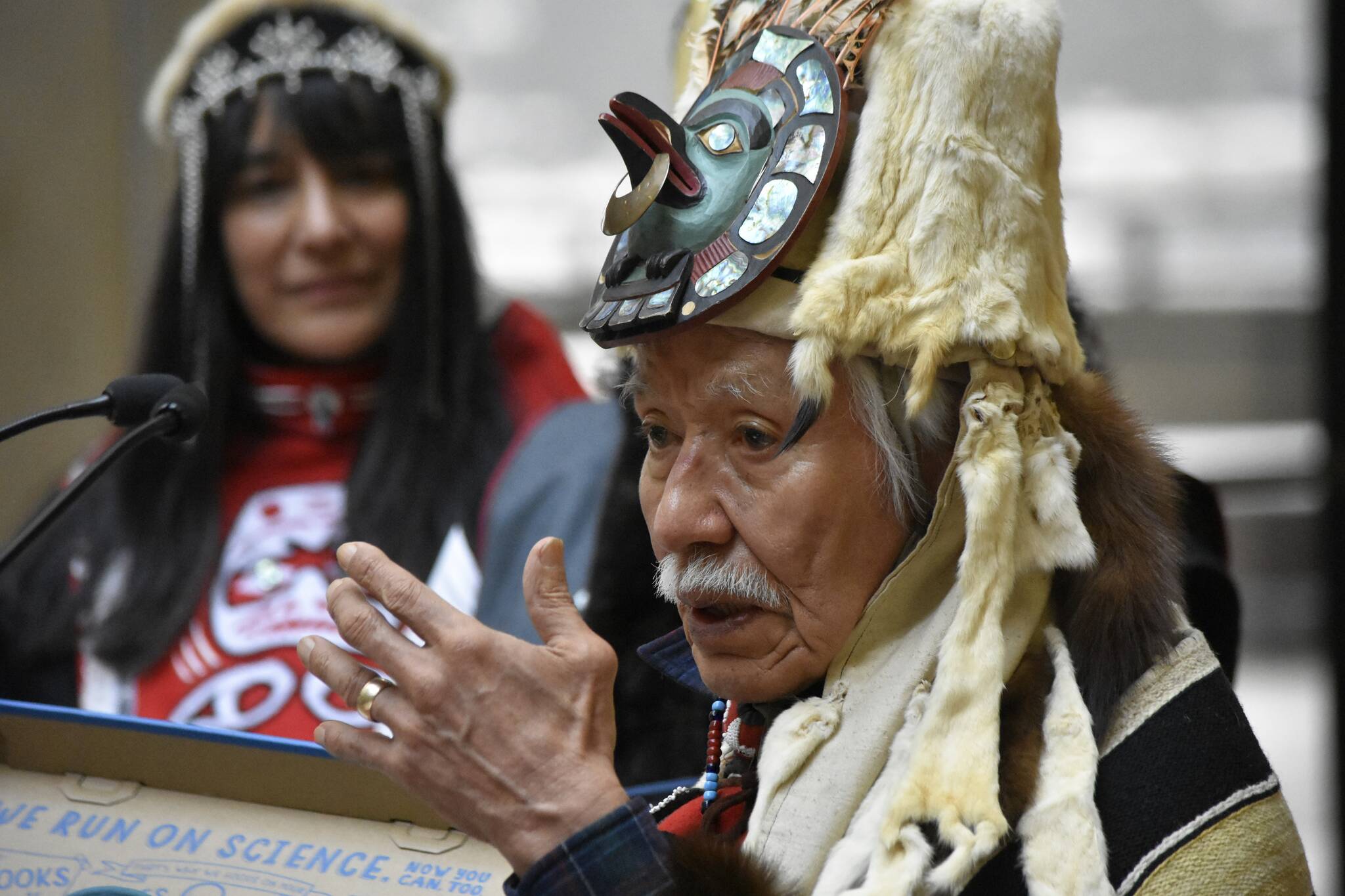JUNEAU — A ceremony Friday celebrated the endurance of Tlingit culture as a totem pole that has been in storage for some years was reraised and put on display in the atrium of the State Office Building.
In over two hours of ceremony, speakers emphasized tradition and working together and the importance of recognizing Alaska Native culture. The ceremony speakers from opposite moieties addressed each other in turn, as is custom in many Tlingit ceremonies.
“We’re here to uphold the Wooshkeetaan,” said Shaagunastaa Bob Sam. “Just like the totem pole this morning, we were here and we used our spirit to lift up the totem pole for the Wooshkeetaan to give them support.”
The pole — known as Wooshkeetaan Kootéeyaa — was carved by Yéil Yádi Nathan Jackson in 1980, assisted by Steve Brown and Dorica Jackson for the Juneau Centennial celebrations, according to the City and Borough of Juneau. The pole was previously placed outside Centennial Hall until 2016 when it was placed in storage due to preservation concerns.
[Alaska lawmakers applaud ban on Russian seafood]
The Juneau-Douglas City Museum began searching for a new home for the Wooshkeetaan Kootéeyaa in 2020 and moved the pole to the State Office Building Atrium in October of 2021, where it has been lying flat and adjusting to the indoor climate, according to the city. The relocation and reraising efforts were sponsored by several local organizations and companies, and workers from Alaska Electric Light and Power helped install the pole in the State Office Building.
The ceremony featured speeches from local leaders including Sealaska Heritage Institute President Ḵaaháni Rosita Worl and Juneau mayor Beth Weldon, but most of the speaking was done by representatives of Eagle and Raven moieties.
”I’m glad that everybody here could be able to appreciate some of the things that I do with my hands,” Jackson told the crowd.
Jackson at times became emotional during his speech at the ceremony as he recalled past friendships and people who had helped teach him to become a carver. The design of the pole was guided by Yaanashtúk George Jim Sr., whom Jackson mentioned several times in his speech. Jim was responsible for choosing many of the figures carved on the pole, Jackson said.
“The most important thing is identification,” Jackson said. “(The pole) represents who we are, it represents history.”
A recurring theme throughout the ceremony was togetherness and reconnecting after two years of COVID-19 restrictions.
“Let’s walk out of here in peace and forgiveness, let’s set aside our hard feelings,” Sam told the crowd. “No longer should we say bad things to each other.”
• Contact reporter Peter Segall at psegall@juneauempire.com. Follow him on Twitter at @SegallJnuEmpire.

